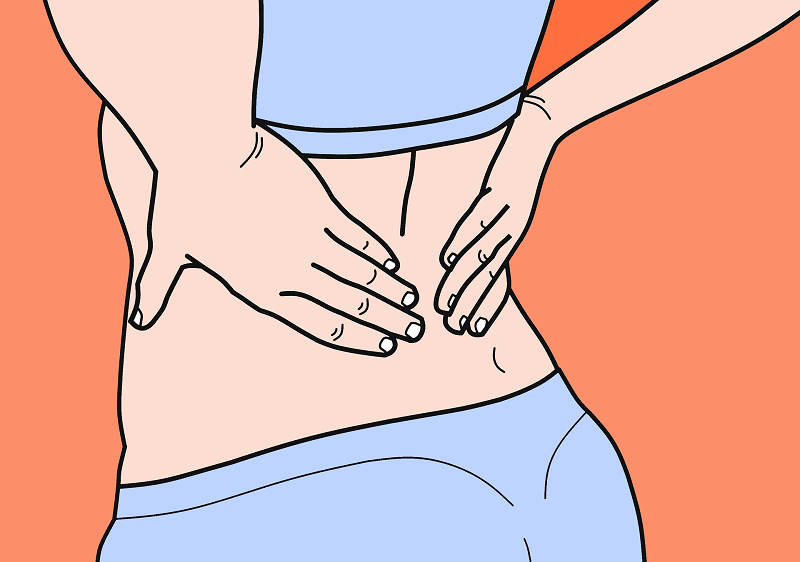Understanding back pain is key to lasting relief. Discover common causes, prevention tips, and smart lifestyle habits for a stronger, healthier back.
Back pain affects millions due to poor posture, inactivity, and stress. Learn how to relieve discomfort, prevent future issues, and strengthen your spine through smart lifestyle habits and daily movement.
Understanding Back Pain: Causes, Prevention & Healthy Habits for a Pain-Free Life
Have you ever stood up from your chair and felt a sudden ache shoot through your lower back? You’re not alone — back pain is one of the most common health complaints in the world. From office workers to athletes, nearly everyone experiences it at some point.
So, what exactly causes this discomfort, and how can you prevent it from coming back? Let’s break it down in simple terms — and learn how small lifestyle changes can make a huge difference.
🌍 Why Back Pain Is So Common
Back pain has become a modern epidemic — thanks to our sitting-heavy lifestyles. Most people spend hours hunched over laptops, phones, or steering wheels, which puts serious stress on the spine.
The back isn’t just one structure. It’s made up of muscles, ligaments, discs, and vertebrae — all working together to support you. When even one part gets strained or misaligned, it triggers discomfort or stiffness.
The real issue? We often ignore early warning signs like tension or fatigue until pain becomes chronic.
💢 Understanding The Anatomy Of Back Pain
Think of your spine as the “highway” connecting your brain to your body. It’s flexible yet strong, allowing you to move freely. But when muscles tighten or discs wear down, that highway becomes bumpy.
The lower back (lumbar region) often takes the hardest hit because it bears most of your body’s weight. Weak core muscles or poor posture can throw this balance off — leading to pain that spreads to your hips, legs, or even shoulders.
⚠️ Common Causes Of Back Pain
Back pain doesn’t just appear out of nowhere. It’s usually triggered by daily habits we don’t think twice about. Some common culprits include:
- Poor posture: Slouching at your desk or leaning over your phone.
- Sedentary lifestyle: Sitting for hours weakens your core and spine muscles.
- Improper lifting: Using your back instead of your legs to lift heavy objects.
- Emotional stress: Tension often builds up in the neck and lower back.
- Unsupportive mattresses or chairs: Lack of proper spinal support leads to stiffness.
“Your posture is your body’s silent language — and bad posture screams pain.”
🧘 Lifestyle Habits That Help Prevent Back Pain
Prevention starts with daily awareness. You don’t need fancy equipment — just consistency and mindful habits.
- 🪑 Improve Your Posture
Sit with your shoulders relaxed, back straight, and feet flat. Keep screens at eye level to avoid slouching. Using an ergonomic chair with lumbar support can do wonders for your spine.
- 🚶 Stay Active
Movement is medicine! Regular exercise — even light walking or stretching every hour — strengthens your back muscles and prevents stiffness. Remember, motion keeps your spine youthful.
- 🏋️ Practice Smart Lifting
Always bend your knees, not your waist. Keep objects close to your body and lift with your legs. This small adjustment protects your spine from strain.
- 🧎 Stretch And Strengthen
Incorporate yoga, pilates, or core workouts into your weekly routine. Stretching improves flexibility, while strengthening builds stability.
- 🛏️ Use Supportive Furniture
A good mattress and adjustable office chair provide proper spinal alignment, reducing pressure points and promoting better sleep.
🧩 Quick Comparison: Good vs. Bad Back Habits
| Habit Type | Good Habits 🟢 | Bad Habits 🔴 |
| Sitting | Straight back, feet flat | Slouching or leaning forward |
| Lifting | Bend knees, lift with legs | Bend at waist, twist spine |
| Sleep | Firm mattress, side sleeping | Old mattress, stomach sleeping |
| Movement | Stretch breaks hourly | Sitting all day |
| Stress | Deep breathing, walks | Tensing shoulders, clenching jaw |
🌞 The Power Of Daily Movement
You don’t need an intense workout to support your back. Simple daily habits matter most.
- Take five-minute stretch breaks each hour.
- Stand during calls or meetings.
- Walk after meals to keep your spine active.
Even small bursts of movement improve blood flow and reduce stiffness — your back will thank you later!
🧠 How Stress Impacts Back Pain
Stress doesn’t just affect your mood — it tightens your muscles too. When you’re anxious, your shoulders rise, your breathing shortens, and tension collects in your back.
Try relaxation techniques like deep breathing, meditation, or gentle yoga to calm both your mind and muscles. Remember, a relaxed mind supports a relaxed body.
🪵 The Importance Of A Strong Core
Your core isn’t just about abs — it’s your back’s best friend. A strong core stabilizes your spine and reduces the risk of injury.
Simple exercises like planks, bridges, or pelvic tilts can build a foundation of support. Consistency beats intensity here — aim for short daily routines instead of long, sporadic workouts.
🧍 Posture-Friendly Workspace Setup
Your work setup can either protect your spine or ruin it. Here’s how to make it back-friendly:
| Element | Best Practice | Why It Helps |
| Chair | Adjustable height, lumbar support | Keeps spine aligned |
| Desk | Elbows at 90 degrees | Reduces shoulder strain |
| Monitor | At eye level | Prevents neck bending |
| Keyboard & Mouse | Close to body | Avoids reaching or twisting |
📱 Technology And Telemedicine For Back Pain
Today, many people are turning to telemedicine consultations for back pain management. Through online assessments and digital posture analysis, experts can recommend exercises, lifestyle adjustments, and ergonomic advice without the need for in-person visits.
This approach saves time and makes professional support more accessible — especially for those with busy schedules or limited mobility.
💧 The Role Of Hydration And Nutrition
Surprisingly, what you eat and drink affects your back too! Hydration keeps spinal discs cushioned and flexible, while nutrient-rich foods like salmon, leafy greens, and nuts support joint health.
Limit inflammatory foods (like processed sugars or fried snacks) — they can make back pain worse. Think of food as fuel for your spine’s recovery.
🧴 Heat, Ice, And Massage Therapy
When pain strikes, basic home treatments can provide relief:
- Heat therapy: Loosens tight muscles and improves circulation.
- Cold packs: Reduce inflammation after strain or injury.
- Massage: Promotes relaxation and helps realign muscle fibers.
These natural remedies can ease discomfort and complement other treatments.
🩻 When To See A Professional
If your back pain lasts more than a few weeks or spreads to your legs, it’s time to get checked. Persistent pain could signal nerve compression, herniated discs, or arthritis.
A doctor may recommend physical therapy, imaging tests, or targeted exercises. Don’t wait too long — early intervention prevents long-term damage.
🌿 Alternative Therapies That Can Help
Alternative methods like chiropractic adjustments, acupuncture, or physical therapy can help relieve chronic back pain naturally.
Many people find these techniques improve flexibility and reduce tension when combined with lifestyle changes. Always consult a licensed practitioner before starting any therapy.
🧭 Creating A Back-Friendly Routine
Sustainable change comes from small, consistent actions. Here’s an easy daily plan:
| Time | Simple Back-Friendly Habit |
| Morning | Gentle stretch before getting up |
| Midday | Stand or walk for 5 minutes every hour |
| Evening | Light yoga or foam rolling |
| Night | Sleep on a supportive mattress |
These micro-habits add up — transforming your back health over time.
🌈 Final Thoughts
Back pain (Rückenschmerzen) may be common, but it doesn’t have to define your life. With mindful posture, regular movement, and smart daily habits, you can build a stronger, more flexible spine.
Remember — your back supports you every day. So take care of it the same way you care for your heart or mind. Small changes today can lead to big relief tomorrow. 💪
🙋♀️ FAQs
- What is the fastest way to relieve lower back pain?
Try gentle stretching, apply heat, and avoid sitting for too long. Movement promotes healing faster than bed rest. - Can stress really cause back pain?
Yes. Stress causes muscle tension, especially around the shoulders and lower back, leading to stiffness and discomfort. - How can I sleep better with back pain?
Use a firm mattress, sleep on your side with a pillow between your knees, and avoid stomach sleeping. - Is walking good for back pain?
Absolutely! Walking improves circulation, strengthens muscles, and reduces stiffness in the lower back. - When should I see a doctor for back pain?
If pain lasts more than two weeks, radiates to your legs, or causes numbness, seek medical attention immediately.




